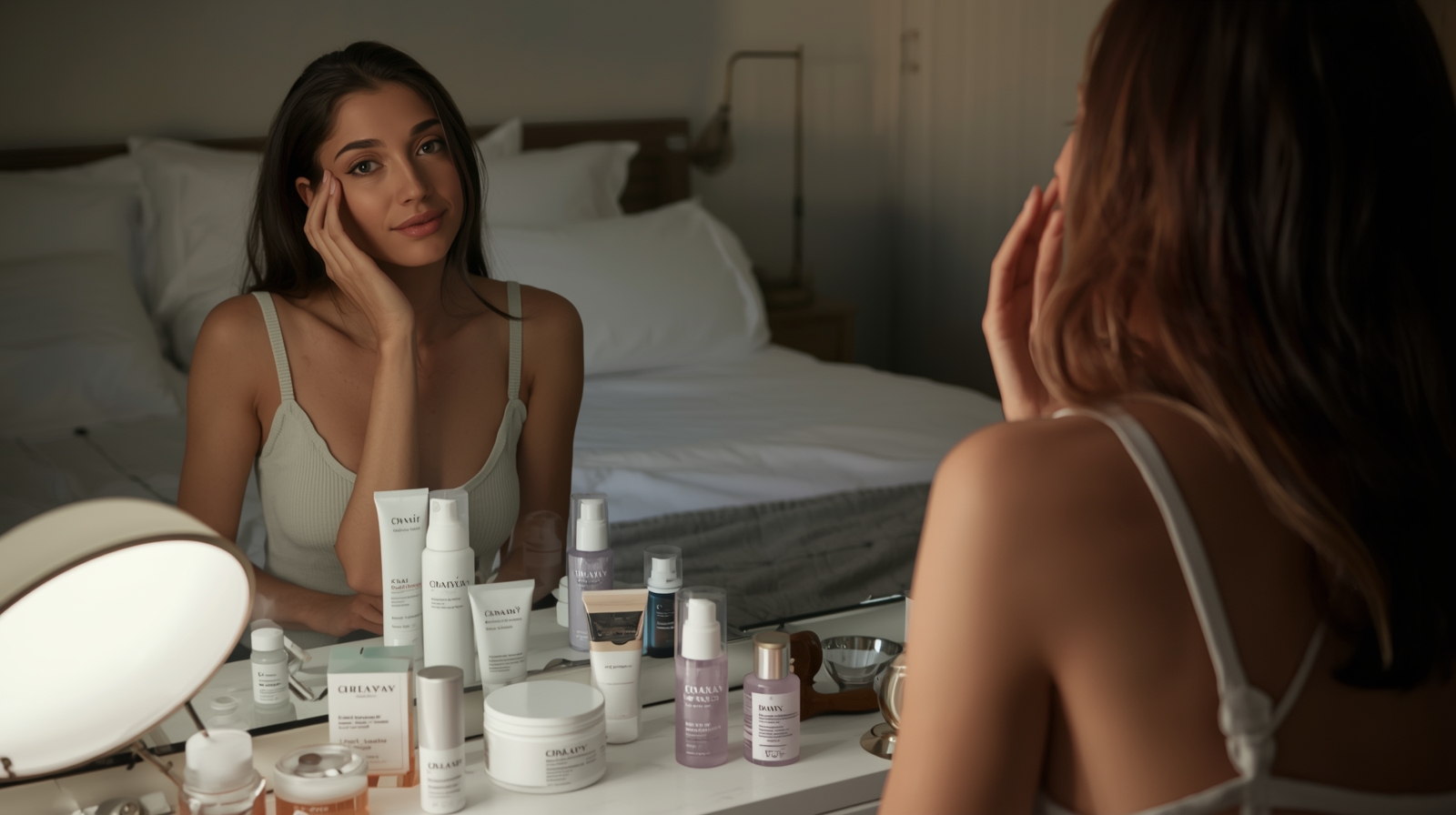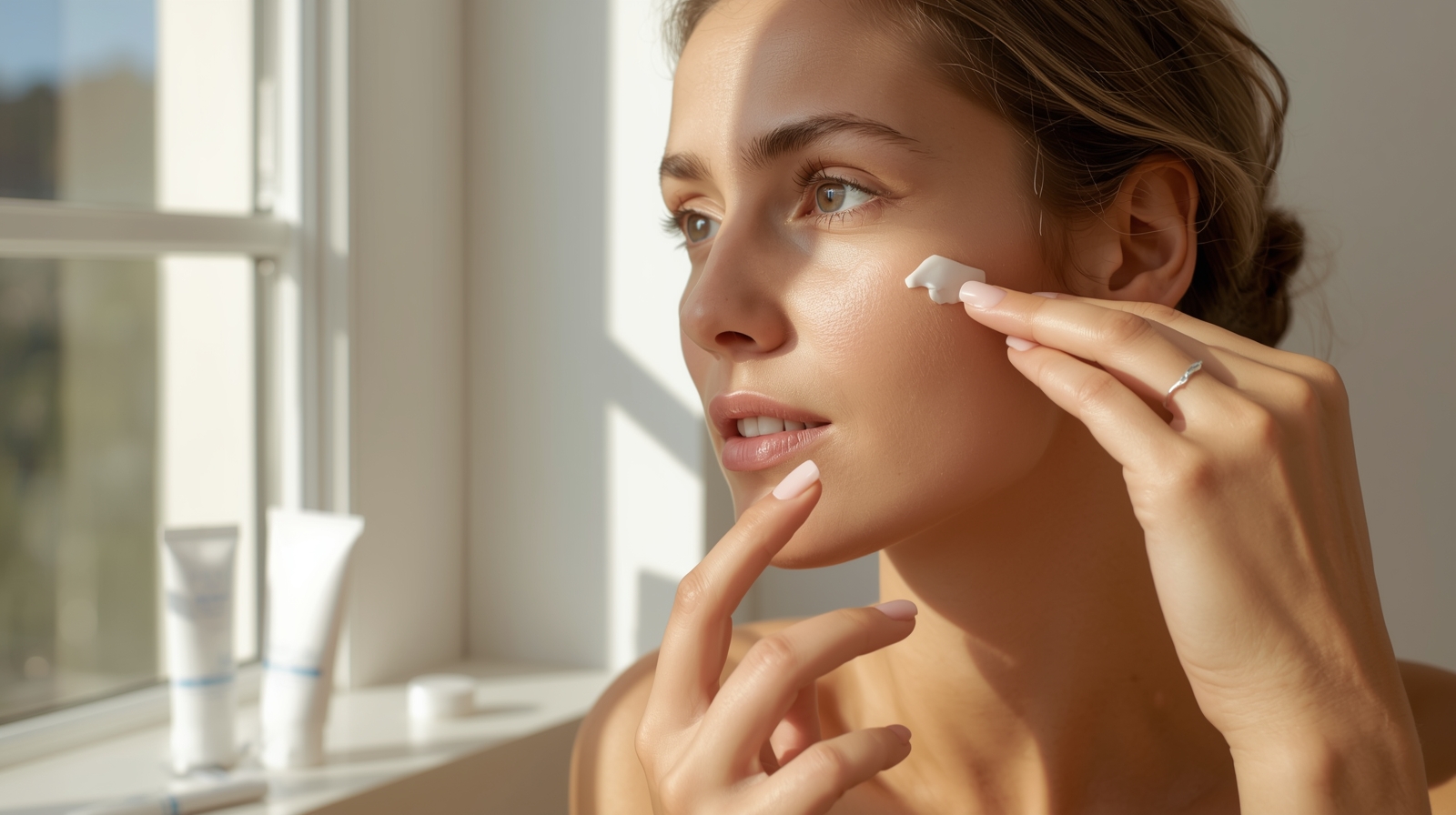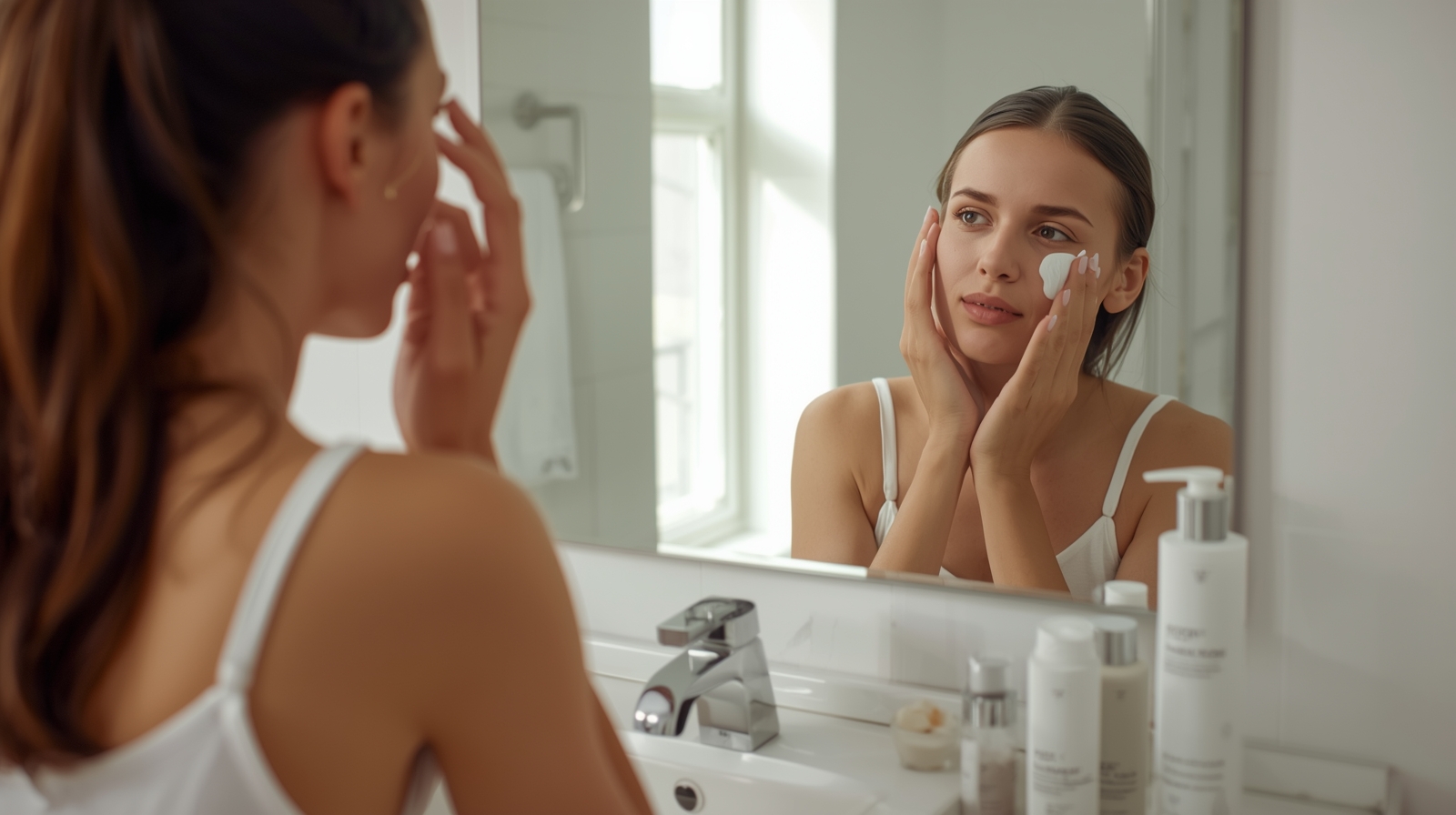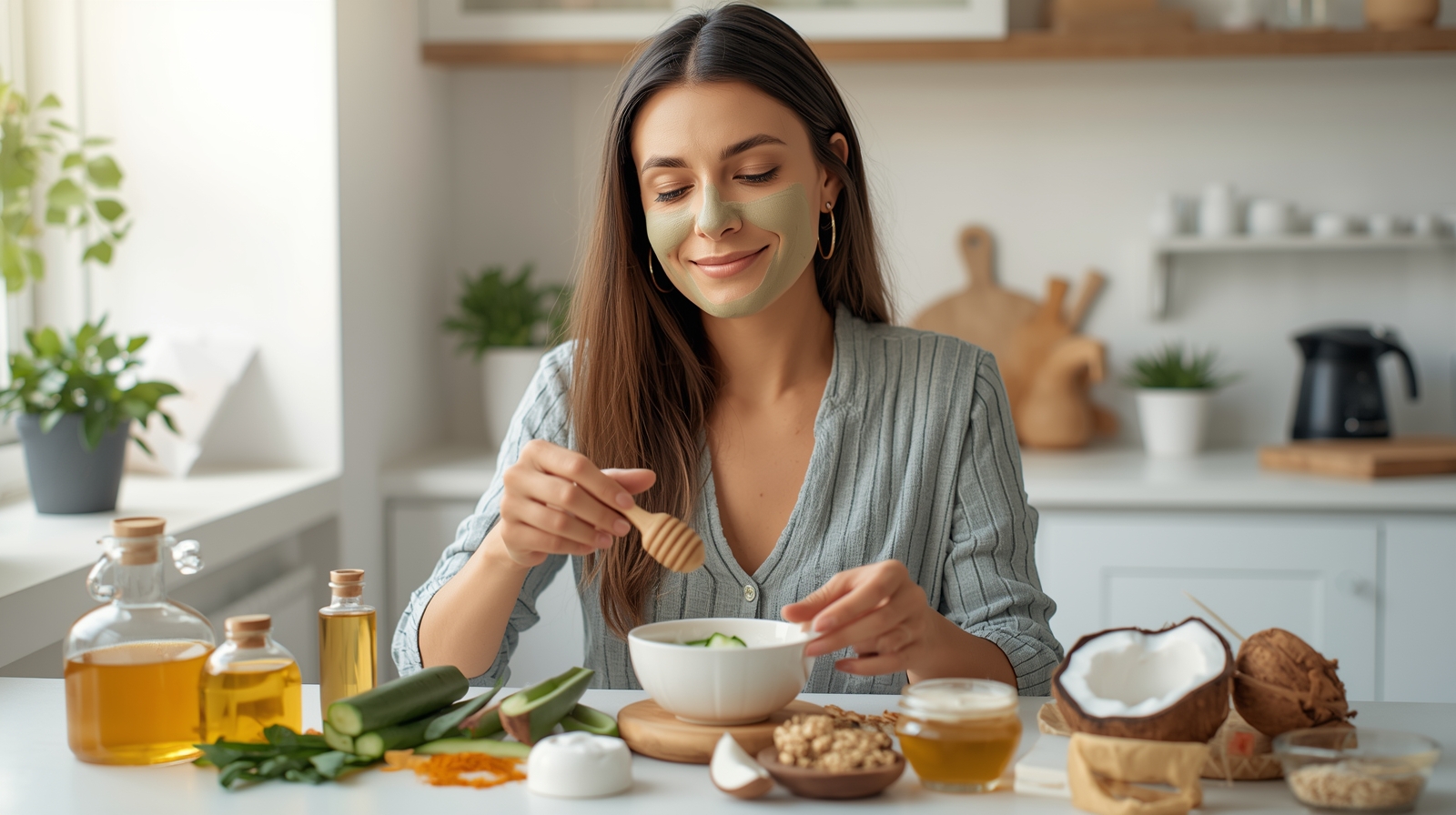Nighttime is a period of natural repair for the skin. During sleep, the body restores balance, increases circulation, and supports renewal processes that maintain skin health. What happens in these hours influences how the skin looks and feels each morning.
Establishing a set of effective nighttime habits can strengthen skin, enhance product performance, and maintain long-term results. This guide explains what to do before bed, what products support overnight repair, and how consistent evening routines contribute to healthier skin.
Section 1: The Science of Skin Renewal During Sleep
The skin follows a circadian rhythm — a 24-hour biological cycle that regulates functions like repair and hydration. During the night, the skin’s barrier becomes more permeable, allowing active ingredients from skincare products to work more efficiently.
Blood flow to the skin increases, and cell turnover rises. This process removes damaged cells and replaces them with new ones. However, external factors such as poor sleep, stress, or lack of care can slow this recovery.
Nighttime routines are designed to work with the body’s natural schedule, ensuring the skin receives the necessary support while resting.
Section 2: Why Nighttime Skincare Matters
Daytime skincare focuses on protection. Nighttime skincare focuses on recovery.
At night, the skin is not exposed to sunlight, pollution, or makeup, allowing ingredients to penetrate more effectively.
Neglecting nighttime care can lead to dehydration, buildup of impurities, and weakened barrier function. Consistent nightly routines help maintain hydration and balance, supporting long-term skin resilience.
Section 3: The Importance of Cleansing Before Bed
Cleansing at night removes makeup, dirt, sunscreen, and pollutants that accumulate during the day.
When left on the skin, these particles can block pores, contribute to irritation, and interfere with overnight repair.
Steps for effective cleansing:
- Use a gentle cleanser suitable for your skin type.
- Wash with lukewarm water to avoid disrupting natural oils.
- Pat the skin dry with a clean towel instead of rubbing.
- Double cleanse if wearing makeup or sunscreen.
Cleansing ensures the skin starts the repair phase with a clean surface.
Section 4: The Double Cleansing Method
Double cleansing involves two steps:
- First, an oil-based cleanser to dissolve makeup and sunscreen.
- Second, a water-based cleanser to remove remaining residue and dirt.
This method ensures the skin is completely free from buildup, allowing nighttime products to absorb effectively. It is especially useful for women who wear makeup daily or live in polluted environments.
Section 5: Applying a Toner or Hydrating Mist
After cleansing, toner helps rebalance the skin’s pH and prepares it for the next steps.
Choose an alcohol-free toner or hydrating mist that replenishes moisture without stripping the barrier.
Apply using clean hands or a soft cotton pad, gently pressing it into the skin. This step helps improve the absorption of serums and moisturizers that follow.
Section 6: Using Targeted Night Serums
Nighttime is the ideal time to apply serums containing active ingredients because skin permeability increases.
Common night serum ingredients include:
- Niacinamide: helps even tone and strengthen the barrier.
- Hyaluronic Acid: binds moisture to the skin.
- Peptides: support repair processes.
- Retinol: promotes cell turnover and renewal.
Use only one active ingredient at a time unless guided by a dermatologist. Always start slowly to prevent irritation.
Section 7: Moisturizing for Overnight Hydration
The skin loses more water at night due to reduced oil production. Applying a nighttime moisturizer locks in hydration and supports barrier function.
Choose a fragrance-free formula that matches your skin type. For dry skin, a thicker cream works best, while lighter formulas suit oily or combination skin.
Apply moisturizer gently using upward motions to ensure even coverage.
Section 8: Using Eye Cream for Overnight Care
The skin around the eyes is thin and prone to dryness. Eye creams are designed to address this area’s specific needs.
Apply a small amount with the ring finger, tapping lightly around the orbital bone. Avoid pulling or rubbing, as the area is sensitive.
Nighttime application supports recovery from daily strain caused by screen time and facial movement.
Section 9: Lip Care Before Bed
Lips lose moisture easily because they lack oil glands.
Before sleeping, apply a hydrating balm or petroleum jelly to create a barrier and retain moisture.
This habit prevents flaking and keeps lips soft through the night.
Section 10: Sleeping Positions and Skin Impact
The way you sleep affects the skin’s condition.
Sleeping on your back minimizes pressure on the face, reducing the chance of developing fine lines from compression.
Changing pillowcases frequently helps prevent buildup of oils and bacteria that can affect skin clarity. Silk or satin pillowcases cause less friction than cotton and help maintain moisture balance.
Section 11: Importance of Clean Bedding
Pillowcases and sheets collect oils, sweat, and product residue. Changing them weekly prevents bacteria from transferring to the skin during sleep.
Using fragrance-free laundry detergents can also help reduce irritation for sensitive skin.
Section 12: Maintaining a Consistent Sleep Schedule
The skin’s repair process aligns with sleep cycles. Irregular sleep disrupts this rhythm and affects recovery.
Aim for 7 to 8 hours of uninterrupted rest. Going to bed and waking up at consistent times supports hormone balance and enhances skin renewal.
Consistency is more important than duration alone.
Section 13: The Role of Hydration Before Bed
Proper hydration supports skin function from within.
Drink a glass of water before bedtime, but avoid excessive intake to prevent sleep disruption.
Humidifiers can also help maintain air moisture, preventing dryness in indoor environments.
Section 14: Nutrition and Nighttime Skin Repair
Certain foods support overnight skin renewal.
Include these in evening meals:
- Foods rich in omega-3 fatty acids such as salmon or flaxseeds.
- Vitamin C sources like oranges or bell peppers.
- Protein sources like lentils or eggs to aid collagen production.
Avoid heavy, spicy, or sugary foods late at night, as they can interfere with rest and digestion.
Section 15: The Role of Sleep Hormones in Skin Health
During deep sleep, the body produces growth hormones that stimulate cell repair. Melatonin, released at night, also provides antioxidant support.
Lack of proper sleep reduces these hormones’ effectiveness, slowing recovery and leading to dullness.
Maintaining regular sleep helps maximize the natural repair cycle.
Section 16: Avoiding Late-Night Screen Exposure
Blue light from phones, computers, and televisions can interfere with melatonin production. Reduced melatonin affects sleep quality and delays the skin’s repair phase.
Avoid screens at least 30 minutes before bed. If needed, use night mode or blue light filters to minimize disruption.
Section 17: The Role of Stress in Nighttime Skin Function
Stress increases cortisol levels, which can affect skin balance and hydration.
Incorporating calming activities before bed, such as light stretching or deep breathing, helps prepare the body for rest.
Managing stress contributes to smoother nighttime recovery cycles.
Section 18: Avoiding Alcohol and Caffeine Before Sleep
Alcohol and caffeine affect hydration and disrupt rest patterns.
Limit consumption in the evening to ensure deeper, more restorative sleep that supports skin renewal.
Choose herbal tea or water instead of coffee or wine at night.
Section 19: Incorporating Face Oils
For women with dry or mature skin, face oils can provide an extra layer of hydration and nourishment overnight.
Common options include jojoba oil, squalane, and rosehip oil.
Apply a few drops after moisturizer to seal in moisture. Avoid using oils if prone to clogged pores unless recommended by a dermatologist.
Section 20: Overnight Masks and Treatments
Overnight masks help boost hydration and support barrier recovery.
They act as a seal, locking in active ingredients and preventing moisture loss.
Use once or twice weekly, applying a thin layer after moisturizer.
Rinse off in the morning and follow with a gentle cleanser.
Section 21: Avoiding Harsh Exfoliation at Night
While exfoliation helps remove dead cells, overuse can damage the skin barrier.
For nighttime care, limit exfoliation to once or twice per week using mild products.
Always follow with a calming moisturizer or serum afterward.
Section 22: Skin-Friendly Bedroom Environment
Environmental factors such as air quality and temperature affect skin overnight.
Keep the room slightly cool, and avoid direct air from fans or heaters.
Using a humidifier helps maintain moisture levels in dry climates.
Section 23: Mindful Relaxation Before Sleep
Relaxation prepares both body and skin for rest.
Practices such as reading, meditation, or breathing exercises can help transition to a restful state.
Avoid stimulating activities that keep the mind alert before bed.
Section 24: The Role of Consistency
Skincare results rely on consistent daily practice.
Following the same steps each night builds routine and stability, allowing the skin to adjust and respond effectively.
Sudden changes or skipping steps can disrupt progress.
Consistency ensures steady improvement over time.
Section 25: Signs of an Effective Nighttime Routine
An effective routine leads to balanced texture, reduced dryness, and steady hydration.
Over time, the skin appears more uniform and resilient.
Monitor how your skin responds to each step. Adjust as needed, but keep the process simple and regular.
Section 26: Morning Transition
After a night of rest, cleanse the face with lukewarm water to remove residue from overnight products.
Follow with a light moisturizer and sunscreen to protect the repaired skin from UV exposure.
This ensures the benefits from the nighttime routine carry into the next day.
Section 27: Common Mistakes to Avoid
- Sleeping with makeup on.
- Using harsh scrubs before bed.
- Applying new active ingredients without testing.
- Skipping moisturizer.
- Inconsistent sleep patterns.
Avoiding these habits maintains the effectiveness of your nighttime care.
Section 28: Adjusting Routine by Season
Seasonal changes affect skin needs.
- Winter: Focus on heavier moisturizers and added hydration.
- Summer: Use lighter textures and maintain cleanliness.
- Spring/Fall: Adjust products gradually to match temperature changes.
This prevents sudden reactions and keeps the routine stable year-round.
Section 29: When to Seek Professional Advice
If you experience persistent dryness, breakouts, or irritation, consult a dermatologist.
They can identify causes and recommend targeted treatments for nighttime use.
Professional input ensures that your routine supports rather than harms skin health.
Section 30: Building the Perfect Nighttime Routine
Example Routine:
- Remove makeup and cleanse.
- Apply toner or hydrating mist.
- Use serum based on current skin needs.
- Apply moisturizer or sleeping mask.
- Use eye cream and lip balm.
- Ensure a clean pillow and calm environment.
Perform these steps consistently for long-term results.



